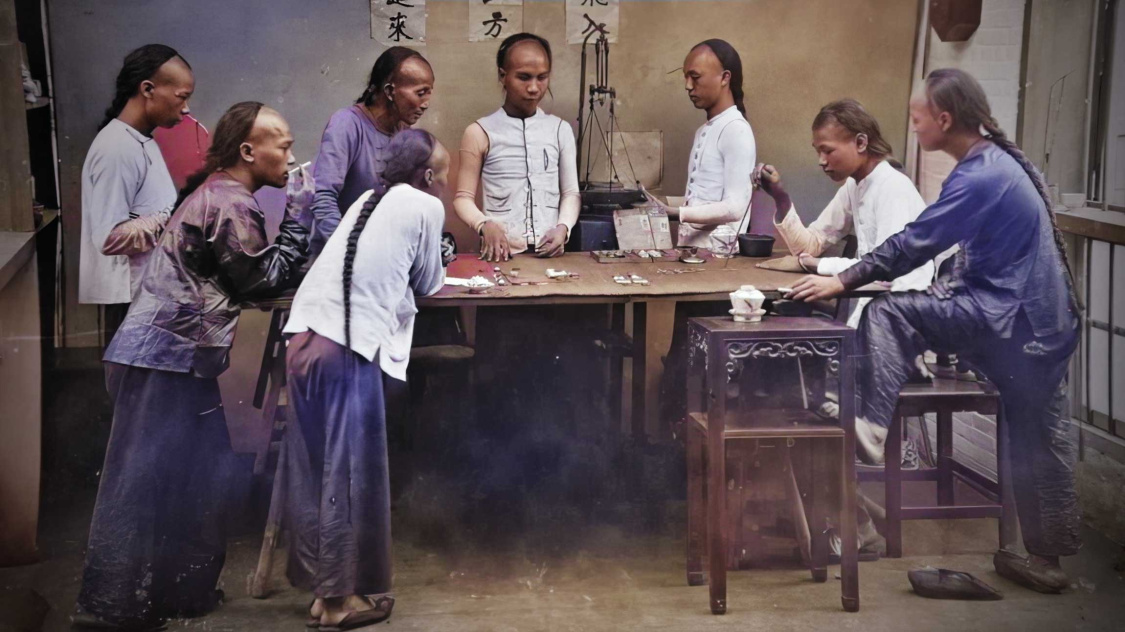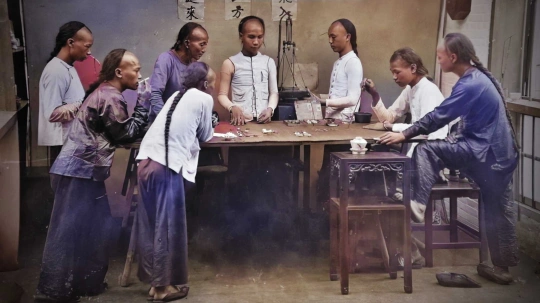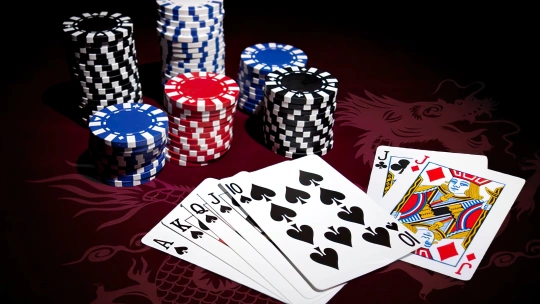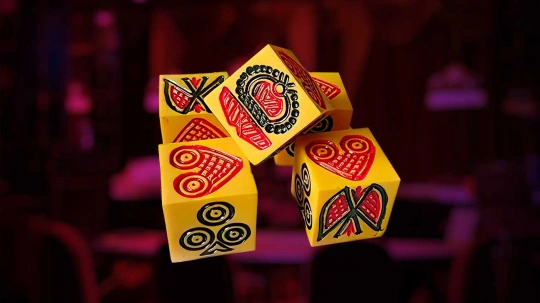Fan-Tan, also known as Sevens or Play and Pay, is a traditional Chinese game of chance. Easy to learn but offering endless opportunities for engaging play and strategy, it originated in China where it was a popular form of entertainment among the working class. Over time, Fan-Tan spread across the globe, becoming an integral part of global gaming culture. Today, thanks to its easy-to-understand rules and accessibility, Fan-Tan continues to win the hearts of players.
In this article, we'll dive into the history and origins of Fan-Tan, learn fun facts about this game, acquaint ourselves with its significance in Chinese culture, and discuss the rules, game strategies, and its modern adaptations. If you're looking for a new party game or just want to expand your collection of board games, Fan-Tan could be a great choice!
History and Origins of Fan-Tan
The Emergence of Fan-Tan
Fan-Tan, also known as Fantan, relies on luck and is one of the oldest gambling games originating from China. Its roots run deep into history, and its exact time of inception is unknown. However, it is believed to have gained popularity during the Qing dynasty (1644-1912 AD).
For centuries, Fan-Tan was a favored pastime among Chinese people from all walks of life, from common peasants to the imperial court. It was prevalent in casinos, tea houses, and gaming houses, serving as a source of entertainment and, for some, a way to make a living.
The Spread of the Game in China and Around the World
With the advent of trade routes and maritime expeditions, Fan-Tan gradually spread beyond China. Chinese immigrants who arrived in America in the mid-19th century brought the game to the New World, where it gained popularity in the Chinatowns of many cities.
In the early 20th century, thanks to its simplicity and engageability, Fan-Tan became known and loved worldwide. It was particularly popular in Las Vegas casinos, where it was one of the main games. Today, Fan-Tan continues to maintain its popularity both in China and abroad. Online versions of the game attract millions of players from around the world, providing them the opportunity to immerse themselves in this unique gambling game right from their homes.
Fun Facts About Fan-Tan
One of the most unusual features of Fan-Tan is that the early versions of the game used standard chicken bones instead of specially designed chips or dice. The bones were thrown on the table, and players bet on the number they believed would be the sum of points that came up.
Fan-Tan was so popular among Chinese immigrants in America in the 19th century that Fan-Tan gambling houses were abundant in the Chinatowns of major cities like San Francisco and New York. In the 1930s, Las Vegas casinos saw a peak in Fan-Tan's popularity. However, over time, due to the complexity of counting bets and the large number of required staff, Fan-Tan gradually gave way to other games like blackjack and poker.
The Significance of Fan-Tan in Chinese Culture
The Role of Fan-Tan in Chinese Society and Traditions
Fan-Tan has played a significant role in Chinese society over the centuries. It was not only a popular form of entertainment but also a way of socializing and connecting. The game brought together people of different ages, genders, and social status, helping them establish connections and strengthen the community.
Moreover, Fan-Tan is often associated with celebrations and traditions. During the Chinese New Year, for instance, it is considered auspicious to play Fan-Tan to attract luck and prosperity for the coming year.
Fan-Tan in Art and Media
Fan-Tan also holds an important place in Chinese literature and art. It is mentioned in several books and movies, reflecting its role in social life. One of the most notable instances is the appearance of the game in the 1982 film "Year of the Dragon," where characters play Fan-Tan in New York's Chinatown.
In some works, Fan-Tan is used as a metaphor for life's randomness and the inevitability of fate, reflecting the philosophy of many Eastern cultures.
How Fan-Tan Reflects Chinese Cultural Values and Attitudes Toward Luck and Risk
Fan-Tan also mirrors some key aspects of Chinese culture and worldview. The game of Fan-Tan emphasizes the importance of luck and chance, aligning with the Chinese concept of "Yuanfen"—a predestined fate or "red thread" that binds people and events together.
Additionally, the game underlines the significance of strategy and tactics, instilling respect for skill and wisdom. This aligns with the value of "Zhì" in Chinese culture, the idea that luck can be turned in one's favor with the right strategy and mindset.
Fan-Tan Game Rules
To play Fan-Tan, you typically need a dealer, a Fan-Tan table, a pile of white beads or buttons, a bowl, and plenty of money or chips to wager.
Detailed Explanation of the Rules
Beginning of the game. The dealer takes a handful of beads or buttons and hides them under a bowl on the table. The number of beads or buttons is unknown to the players.
Betting. Players place bets on one of four numbers - 1, 2, 3, or 4. The bet represents the player's guess about how many beads or buttons will remain after the dealer divides all the beads or buttons into sets of four.
Revealing the bets. Once all bets are placed, the dealer removes the bowl and begins to divide the beads or buttons into groups of four using a special stick.
Determination of the winner. After all the beads or buttons are divided into groups of four, there will remain from one to four beads or buttons. This number determines the winner. Players who placed a bet on this number win, while the rest lose.
Fan-Tan as a Game of Strategy
Although Fan-Tan is more a game of luck than strategy, there are some tactics and tips that can help players improve their chances of success.
Discussion of Strategic Elements in Fan-Tan
In Fan-Tan, the number of beads or buttons the dealer takes and how they are divided is completely random, so players can't predict the outcome with certainty. However, players can try to apply some strategy by making calculated bets depending on the situation in the game.
Tactics and Tips for Skillful Play
Distributing the bets. Players can try to distribute their bets on different numbers to increase their chances of winning. For example, instead of putting all the money on one number, a player can distribute their bets on two or three numbers.
Risk Assessment. Another approach to strategy in Fan-Tan is risk assessment. Some players prefer to bet on numbers with higher payouts but a lower probability of success, while others prefer to play more conservatively, placing smaller bets on numbers with a higher probability of success.
Bankroll Management. A crucial part of any gambling strategy is bankroll management. Players should set limits for themselves and stick to them to avoid substantial losses.
Ultimately, the key factor in Fan-Tan is luck. But understanding the game and applying these strategies can help players improve their chances of winning.
Modern Adaptations of Fan-Tan
Like many traditional games, Fan-Tan has undergone some changes and adaptations over time. These changes have helped the game remain popular and attractive to new generations of players.
How Fan-Tan has Evolved and Adapted Over Time
One of the most noticeable changes in Fan-Tan is its transition from traditional gambling houses to casinos. Instead of white beads or buttons, many modern versions of the game use special chips or tokens that are easier to handle and track.
Online Versions of Fan-Tan and Other Technological Adaptations
With the advent of the internet, Fan-Tan has also gone online. Many online casinos offer versions of Fan-Tan that players can enjoy from the comfort of their own homes. These online versions typically use random number generators to determine the number of beads or buttons, and bets can be made using electronic money or credits.
The Game's Presence in Modern Casinos
Fan-Tan continues to be a popular game in casinos around the world, especially in Asia. In some casinos, the game may be slightly modernized to attract more players or speed up the game, but overall, it remains true to its traditional roots.
In general, modern adaptations have helped Fan-Tan remain an important and beloved game over many years, and it will undoubtedly continue to evolve and adapt in the future.





